Heroes who came back with broken minds from the killing fields of WWI have been laying forgotten for more than a century in the Ipswich General Cemetery.
These men are only now being found and given the recognition they deserve thanks to the tenacious efforts of an Ipswich veteran.
The Australian Imperial Force (AIF) plot in the cemetery has only four marked graves but it is now known to contain the unmarked graves of 72 servicemen.
These are the bodies of Aussie diggers who returned fatally damaged from the shores of Gallipoli and the horrors of the western front only to be lay unloved and unrecorded until now.
Their stories can finally be told for the first time after Malaya and Korean War veteran Matt Rennie spent almost 20 years piecing together the mystery of who these men were and how these most iconic war veterans were forgotten.
Preparing for the end
Mr Rennie stood at the AIF section of the Ipswich General Cemetery.
“It looked like a cow paddock, not level and just covered in grass,” Mr Rennie said.
Thinking of his own final resting place Mr Rennie decided that is where he would like to be.
“I got in touch with council and said when I fall off the perch, you can put me in there,” he said.
“I was told that it was full.
“I reacted rather strongly to that because it’s the AIF section of the cemetery, it can’t be full, there are only four headstones.”
That was back in 2002.
“So, I started to investigate,” Mr Rennie said.
Staggering discovery
A cemeteries council worker at the time accompanied Mr Rennie to probe the soil over the whole section.
“We found 72 bodies in that section with no records,” Mr Rennie said.
“It made me really upset and still does.
“No records were kept about who went into that ground.”
It became an obsession for Mr Rennie who promised himself that he would find out who these men were and that they would be recognised.
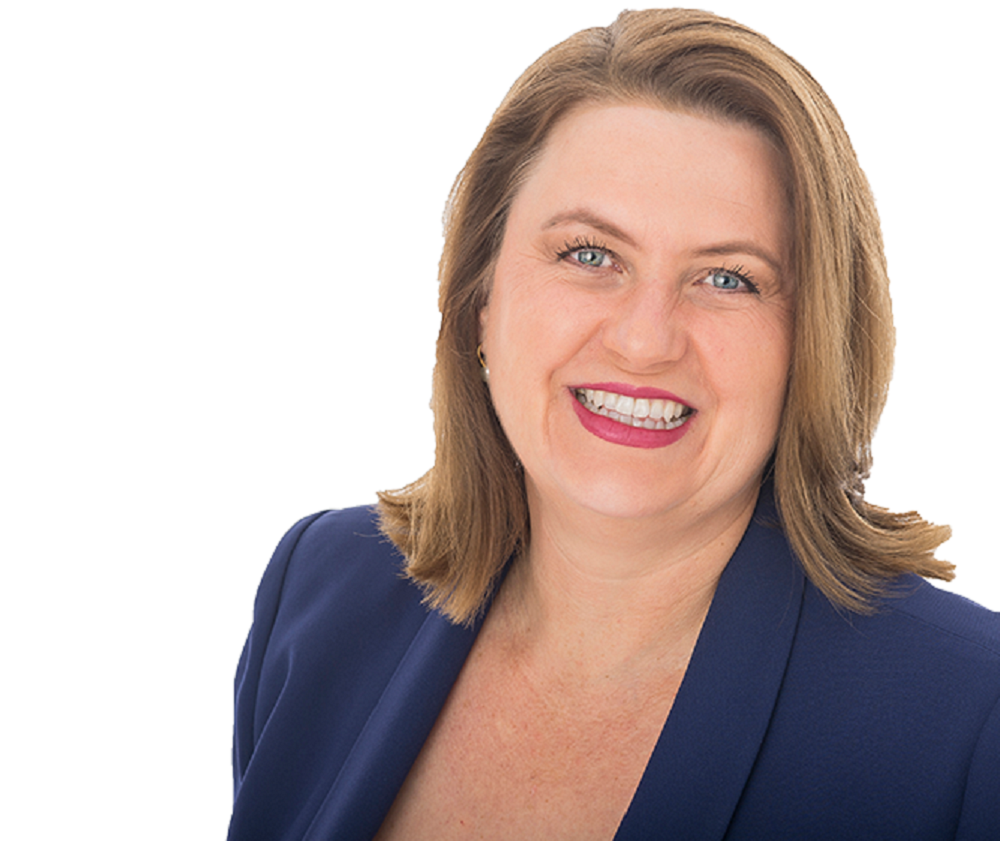
Ipswich Mayor Teresa Harding said the new markings are an important way of paying the community’s respects to servicemen and women.
“The sacrifices made by the members of our armed forces have helped to build the free and prosperous society that we enjoy today.”
“The new markings are an opportunity to remember those who served the nation, including those who came home carrying the physical and psychological scars of conflict.”
“I would like to thank Mr Rennie and everyone who has helped him for their commitment to our returned servicemen and women.”
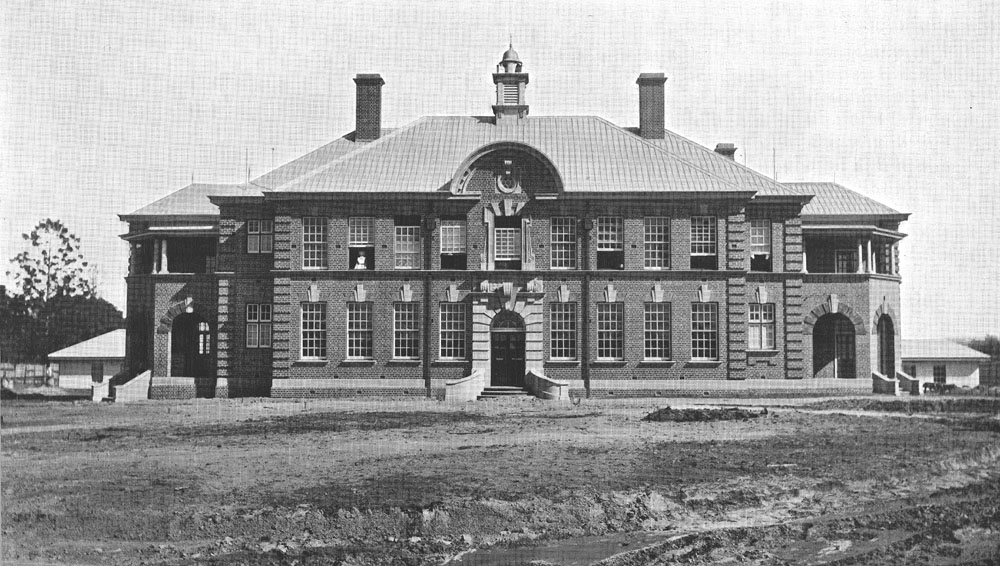
Ipswich Hospital for the Insane administration building in 1915. Image: findandconnect.gov.au stating the source as Queensland Parliamentary Papers 1915
A little help from some mates
I was telling the others at the Ipswich RSL Sub Branch and one of the guys there told me that he knew something about it.
“He said a boiler man used to knock up a timber box and paint it black, and that is how they dealt with veterans who died from the mental asylum,” Mr Rennie said.
The Sandy Gallop Asylum operated under various names from 1878 until 1998.
Mr Rennie has been able to identify 36 of the 72 bodies he found so far.
“The men I have been able to identify are from all over Australia,” he said.
“A lot of them were picked up drunk and declared vagrants as they didn’t have the required seven shillings and six pence in their pocket.
“They would then get put into a cell, which is the worst place to put someone with post-traumatic stress disorder.
“Their minds were shattered from their experiences in WWI.
“There was one hell of a stigma around mental issues and there was a different morality in those times.
“So if they played up in the cells they would be sent off to Sandy Gallop and most of these men didn’t have families, once you were there, that is where you stayed, there was no one to get them out.”
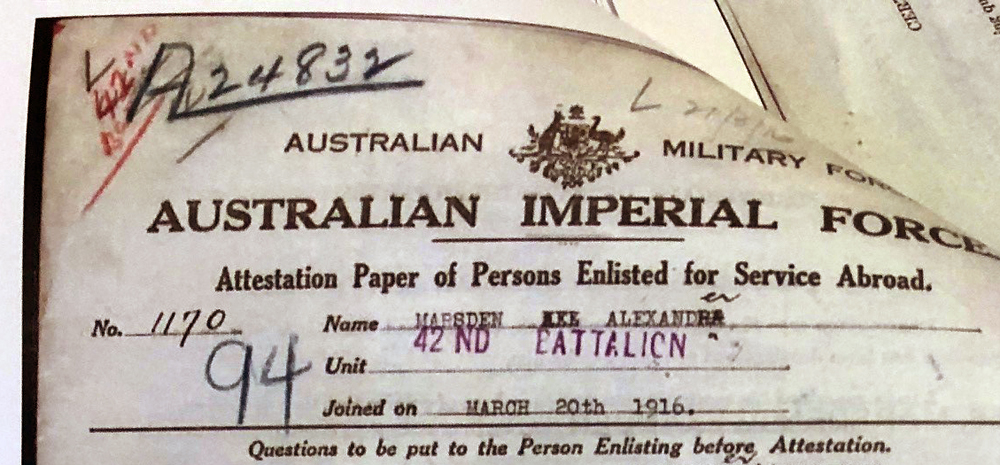
Stitching it all together
As Mr Rennie found a soldier, he would look at their war records making some interesting discoveries.
“The oldest grave I found was of Major William Thomas Deacon who served in the Queensland Imperial Bushmen in the 1899-1902 Boar War,” he said.
“Another was a young lad from Dinmore, Samuel Finch Wilson, joined the Army at just 16 years of age. He was badly gassed in France when he was 17.
“He was sent back home when he was 18 and died at 21 years of age on August 16, 1923.”
One of the stories that particularly stood out to Mr Rennie was that of Private Alexander Marsden.
“Alexander Marsden, told the doctor he was 44 when he joined in 1916,” Mr Rennie said.
“He was in the 42nd Australian Infantry Battalion and went off to England during WWI.
“He was discharged in 1917 for sciatica and senility and found himself in the mental hospital here in Ipswich.
“It turned out he was in fact 73 years of age at enlistment.
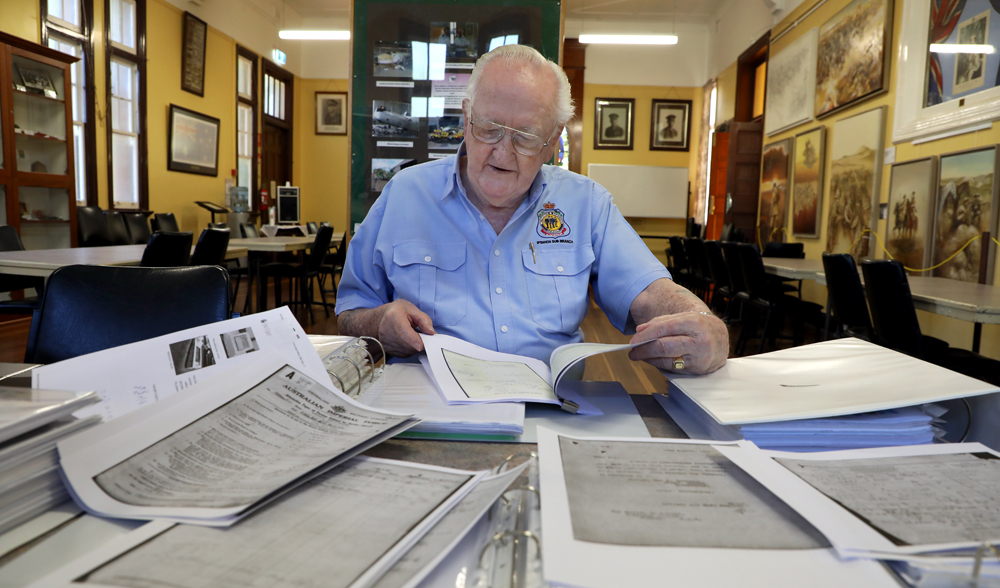
Malaya and Korean War veteran Matt Rennie spent almost 20 years researching to find out who the unknown soldiers were
Setting the record straight
Mr Rennie has dedicated years of his time researching to find out who these men were and he wants them to get the recognition they deserve.
“The following generation won’t do it. I grew up among WWI veterans and it was one of the main reasons I joined the army,” he said.
“I just feel we owe it to them to do it.
“They made Australia the great country it is and the Aussies were the best troops on the front lines.
“I hit many dead ends but I hope to find them all eventually.”
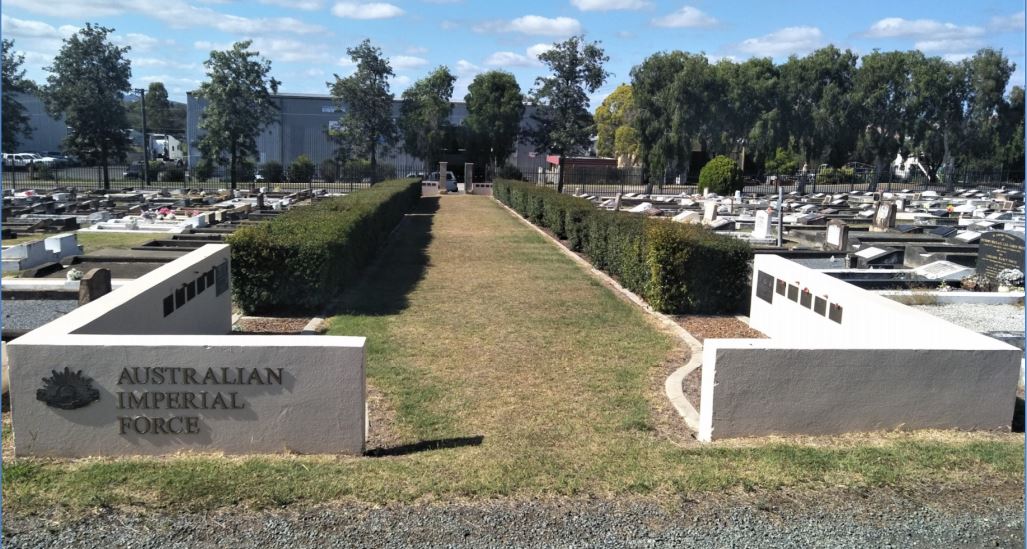
The Australian Imperial Force (AIF) plot in the Ipswich General Cemetery
Plans for memorial walls
The Ipswich City Council lodged a development application to extend the memorial walls at the AIF section at Ipswich General Cemetery to accommodate plaques with the names of soldiers that Mr Rennie and the Ipswich RSL Sub Branch has found.
Now that application has been approved and will see two new walls will be built alongside the existing walls, rendered and painted to match.
Not only has Mr Rennie been able to identify 36 of the AIF soldiers, he has also identified about 150 servicemen in the Ipswich General Cemetery, some that do have headstones, and some that don’t.
“This is why we want to extend the wall,” Mr Rennie said.
“So every veteran in the cemetery can go on the wall in recognition of their service.”
This project will be funded by community donations collected by the Ipswich RSL Sub Branch via the ‘Adopt a Soldier’ fundraising campaign.
Local businesses and the Australian Defence Force will pitch in for the construction expertise, equipment, materials and donation in kind.
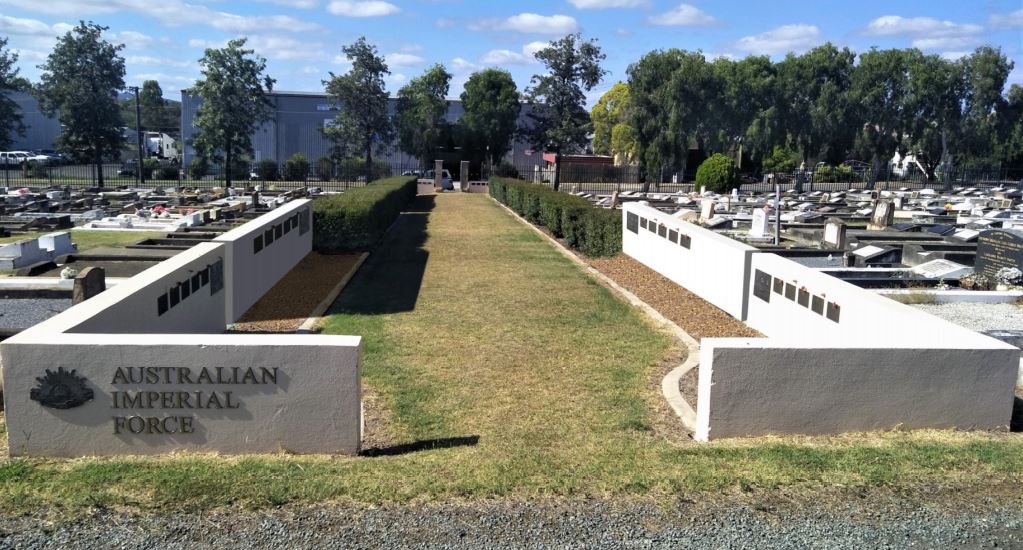
Artist impression of the new walls to be built at the AIF section at Ipswich General Cemetery to accommodate plaques with the names of 150 soldiers who are buried in the cemetery

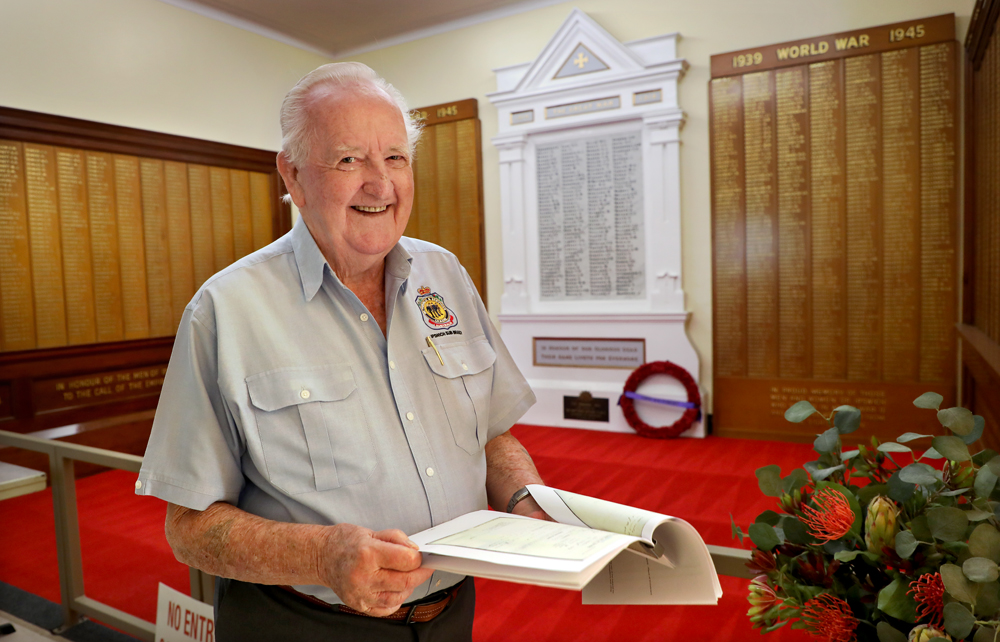
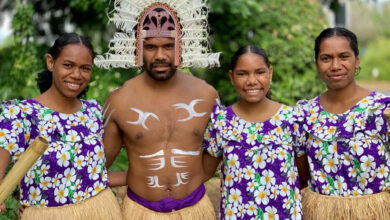
How can I find the names of the 150 soldiers buried in the General Cemetery?
My great, great grandparents came directly to Ipswich from England in 1878 & married there 1879. They had 10 children & a lot of their descendents would still be in the area. I have done a lot of research and think I might have a link with some of the WW1 soldiers. Thanking you.
Desley Stevenson
Hi Desley. The following link (AIF Records) is for those Soldiers born in Ipswich. It may or may not be a full list but it will give you a place to start.
(i) https://www.aif.adfa.edu.au/searchtype=search&name=®Num=&place=&pob=Ipswich&fdwFateCode=all&fdwDate=
(ii) (National Archives Australia) has all WW1 records if you know who you are looking for. https://recordsearch.naa.gov.au/SearchNRetrieve/Interface/SearchScreens/BasicSearch.aspx
Well done Matt, i understand alot of these men were railway workers, i hope qld rail or their union has donated towards this great project.
Matt Rennie should be nominated for Public recognition and more for his dedicated years of research Such an accomplishment and also his helpers named too. Congratulations to them all.
What an absolutely fantastic effort being made by Matt and his helpers. Long due recognition for those who sacrificed their livelihoods so that we can live as we do today. RIP and thank you for your service. Lest We Forget.
Well done Mr Matt Rennie, I honour and respect you so much for all the countless hours of time and over the many years that you have spent in research to find out who these brave imperial soldiers are. I am a former army reservist soldier myself and my later father Mr Andrew Scott also was a return Viet Nam veteran. I am ashamed that our own Australian federal government won’t pay for all of these expenses as it was the Australian federal government that send all our defence forces to these foreign conflicts and does not look after all of them on their return.
My father has also passed on many years ago, and was never recognised for the many active service campaigns that he saw. He passed away with cancer as well.
Thank god for caring veterans like you Mr Matt Rennie, you are such a decent gentleman, and the those that have now passed I am sure would surely salute you too. LEST WE FORGET.
Well done Matt, keep the great effort. We as a community in Ipswich can be too ‘laid back’ at times.
Many stories have never been recorded and lost forever because of general apathy. Some info recorded is often incorrect.
My grandfather returned after WW1, a physically and mentally scared individual who had endured the serious effects of the Mustard Gas and months in hospital.
He would never talk about it and refused to ever wear his medals. I feel he was ashamed of what he had to do when he went back into the front-line on Christmas Eve and because of his weakened condition, ordered to only pick up ‘Commissioned’ personnel on the battle field. Possibly had to step over some of his battalion mates in the process.
Once again great work, I admire your commitment & perservance and willing to help in any way, if required.
Alexander Marsden (WW1 Soldier buried in Ipswich) is entitled to a free CWGC grave and headstone because he was discharged with senility as recorded in his war records and died in the asylum in Ipswich. Could you please let Veteran Matt Rennie know please? Contact CWGC Craig Henderson PO Box 23 Kedron 4031 or [email protected]
senility is not a war caused disability.
WW1 Alexander Marsden (buried in Ipswich) is entitled to a Commonwealth War Grave and plaque because he was discharged with senility (see his records for dates). Contact [email protected]
Frederdic Kroger is a solder buried in the top corner of the cementry, is he entitaled to a proper head stone ? He was my great uncle . His parents are also interred there.
I have been looking for my uncle Francis Joseph Gorlick born (5/8/1895 Queensland)for quite a number of yrs with no result. He is constantly confused with his uncle of the same name .
All I have are family stories and an article from the ( Queensland’s who fought in the Great War) that states he suffered from shell shock in France and was sent home medically unfit for active service.
His name is on the Roll of Honor in his home district of Albionville near Bundaberg.
I have spoken to the army and offered my DNA but was refused as they told me he didn’t exist and they only accepted male DNA.
Well my mother was his sister, but both my sons have done DNA with Ancestry hoping he recovered married and had children. Sadly no result so far. My sons are willing to give DNA for the purpose of finding our unidentified war dead.
Could someone please help me find him.
I believe his name has been misspelled and I believe he may have ended up in an asylum and died there.
Any assistance in this matter would be greatly appreciated.
Kind regards Jennifer Horwood
Thank you for what you are doing, to acknowledge these soldiers & give them the recognition they deserve.
Hi Matt,
I job well done. For these mighty men, we would not be enjoying our freedom today. Is there any day planed for recondition for these brave men. So many people would like to attend.
Thanks
This man is one amazing guy he deserves a very high honour for his work. Thank you Matt and everyone else involved in such a wonderful project.
We will remember them .
Lest We forget